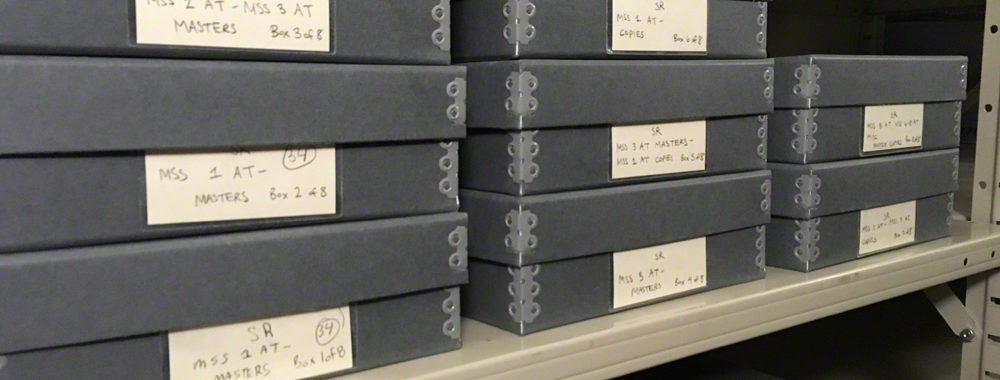
CMC Blog
Irish Tape and Our Sound Recording Collections
By: Jim DaMico, Curator of the Audiovisual Collection
One of the collections I get to manage are the Sound Recordings, and, as you can imagine, we hold a pretty diverse spectrum of recording technology. Below are a few examples from our Oral History section and a little bit of history about some audiotape technology.
Audiotape is composed of a base, binder and pigment. Historically, the base could be paper polyvinylchloride (PVC), acetate or more commonly, polyester. Except for PVC based tapes, the binder in audiotape is polyurethane.* The most commonly found pigment is ferric oxide, basically iron rust.
Irish brand audiotape
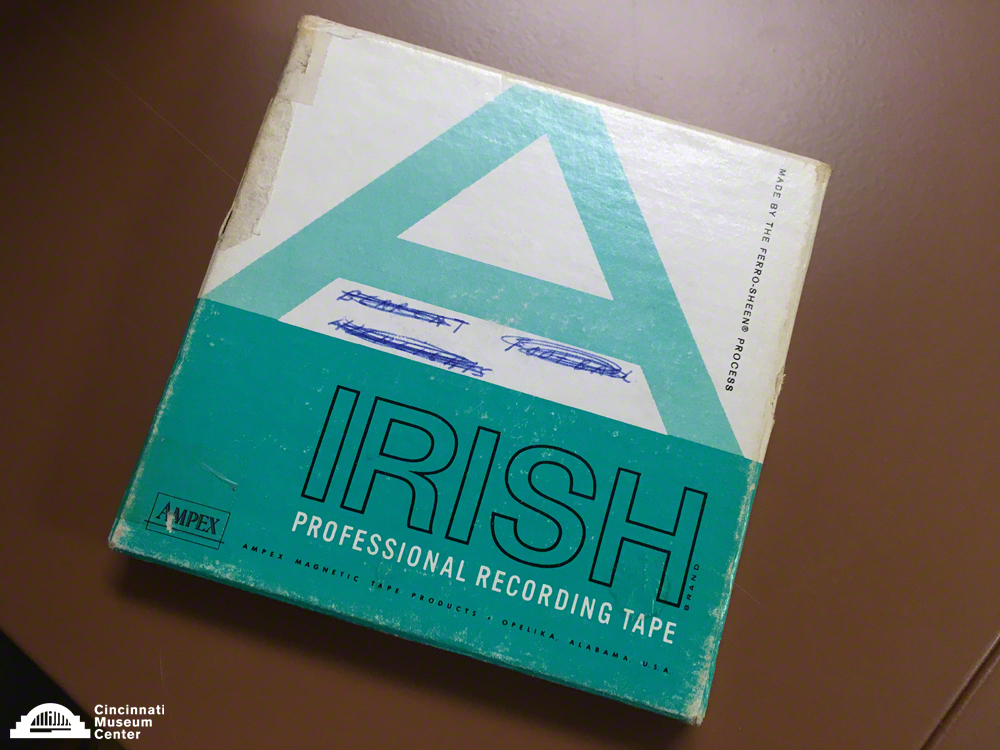
Cincinnati Ballet Company Collection. Top of reel to reel audiotape box that contains a recording entitled “Cincinnati Dance #4, 10-31-70”. Note the Irish brand.
The Irish brand of audiotape has its history back to World War II, in the studios of Radio Luxembourg. General Dwight Eisenhower had ordered that no captured German audiotape was to be used by the Americans to make recordings. This order was the result of a botched recording of General Eisenhower by the American Signal Corps. The Corps used captured German audiotape that had remnants of a Hitler speech. Hitler's speech was merged with Eisenhower's speech during a live broadcast to occupied Germany. The recording went undetected by the Americans for several minutes. Needless to say, the General was not happy. Producing new audiotape fell to a Major John Herbert Orr, an engineer from Alabama who served in the Psychological Warfare Division. Orr was tasked by Eisenhower to use captured German scientists to setup an American tape manufacturing facility. By 1950, Orr had formed OrRadio Industries to manufacture magnetic audiotape named “Irish” based on German research and development. In 1959, the Ampex Corporation of Redwood, California bought OrRadio Industries and continued to produce the Irish line of audiotape.***
Audiotape labeling
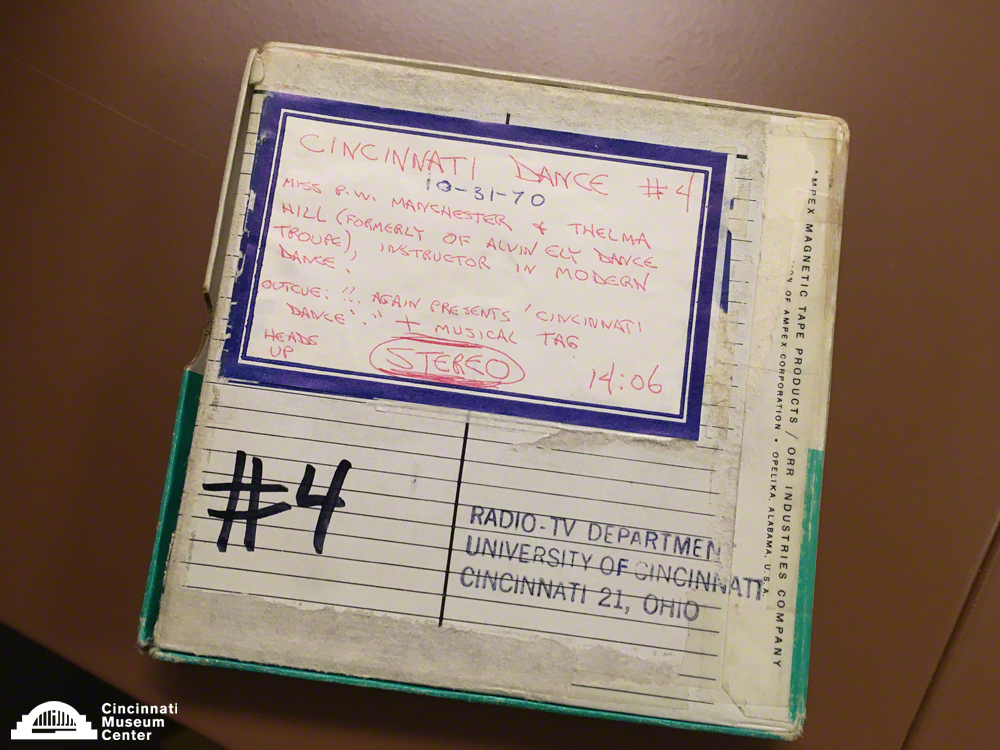
The back side of the Cincinnati Ballet tape, featuring a typical description
This represents a pretty typical label found on a reel to reel audio recording. We know the title of the recording: “Cincinnati Dance”; the tape number #4; individuals that may be on the recording: Miss P.W. Manchester and Thelma Hill; which direction the tape is in: Heads up means once you put the reel on a tape machine it will play back without having to be rewound first; type of recording: Stereo (2 channels) and duration: 14:06 (14 minutes and 6 seconds). The recording appears to have been made by the University of Cincinnati’s Radio-TV Department and may contain the musical track that was used in a dance taught by Manchester and Hill.
According to a biography written for the 3 part film, “Free to Dance”, Thelma Hill was an African-American modern dancer that was part of a dance troupe that formed in 1958 and included Alvin Ailey. In the 1960’s Hill’s teaching career included tenure at the University of Cincinnati. ****
More examples from our Audiovisual Collection
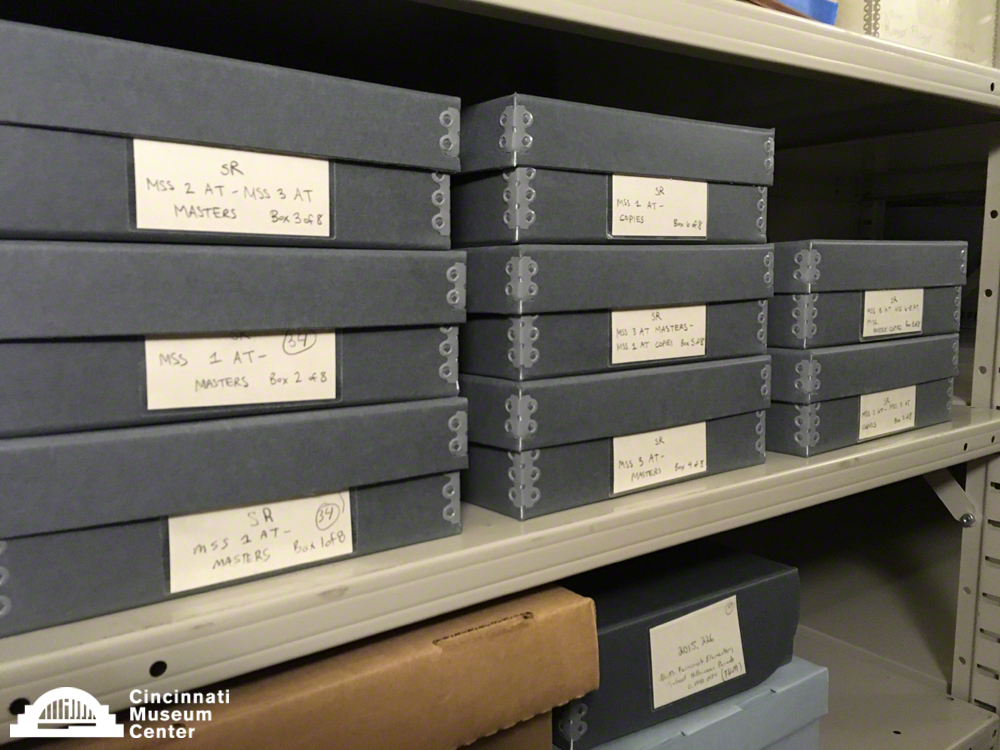
Audio cassettes in archival boxes.
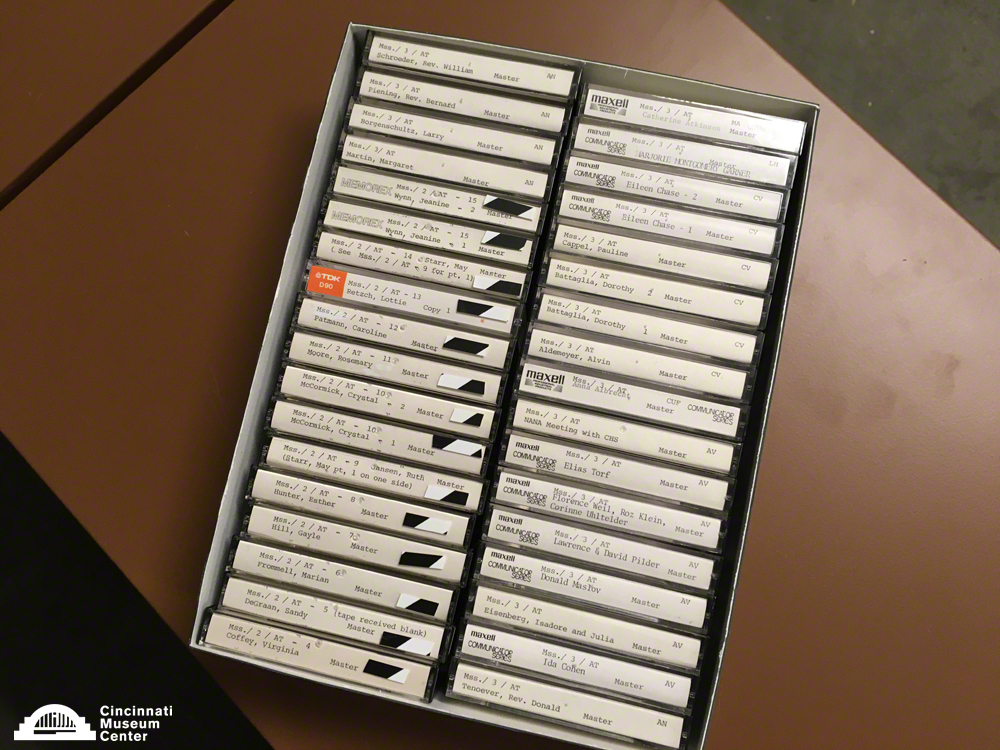
Oral history cassette tapes in archival container. See how snug they are? We want to make sure collection items are not colliding into each other causing undue damage.
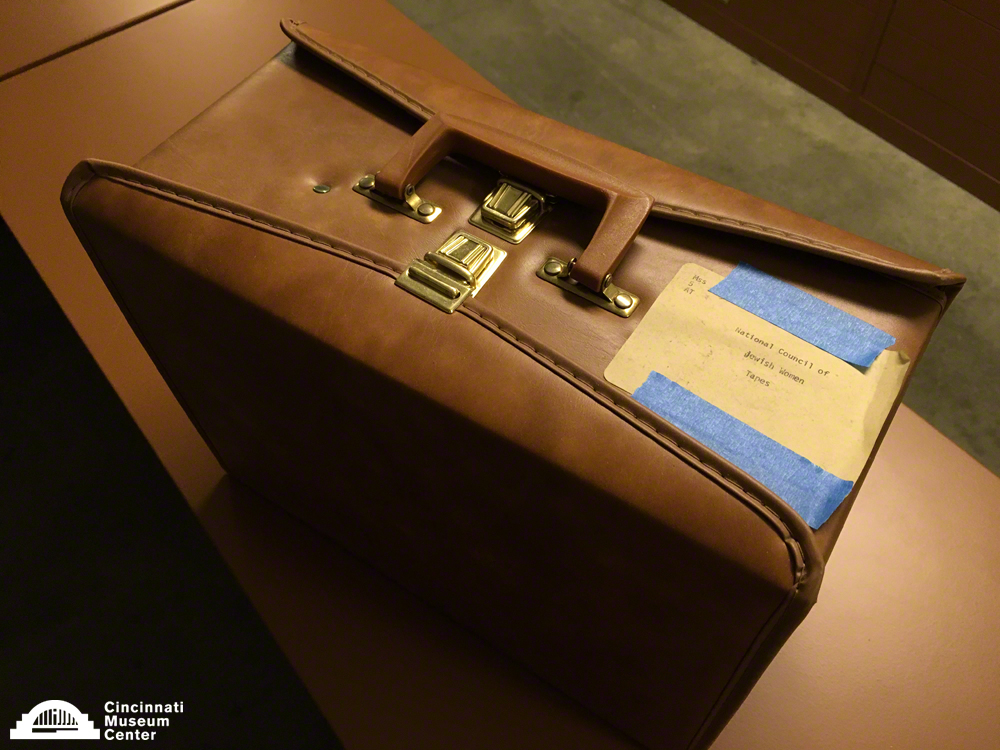
National Council of Jewish Women oral history cassette tapes in closed carrying case. Notice the 2 hinges? That shows there are 2 compartments which hold the cassette tapes.
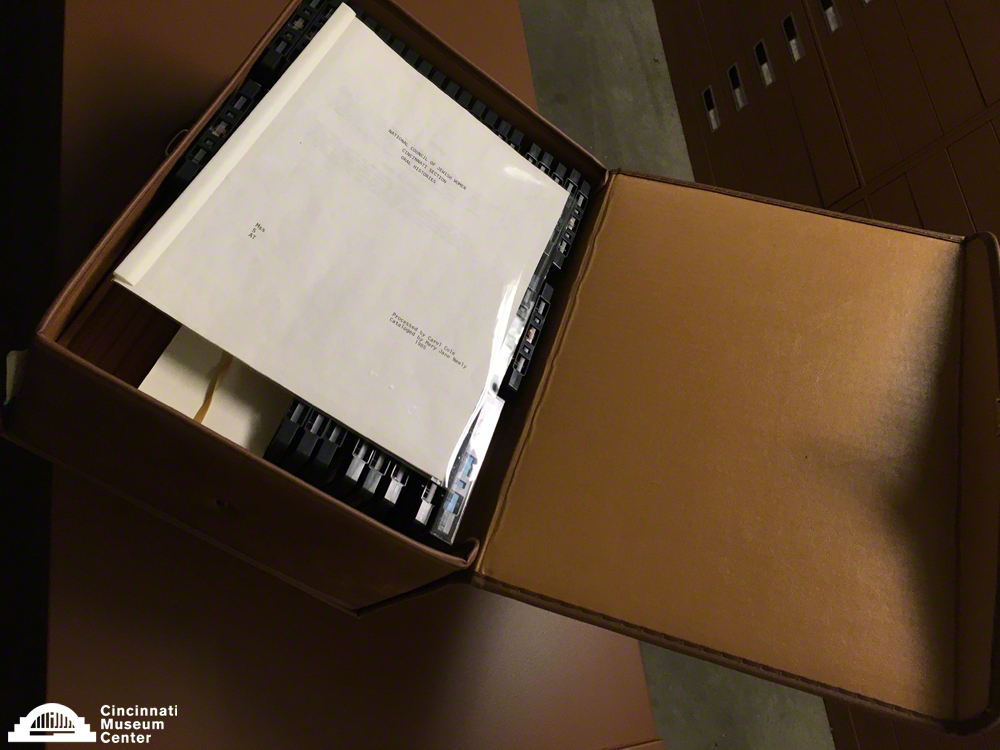
National Council of Jewish Women oral history tapes in carrying case with inventory.
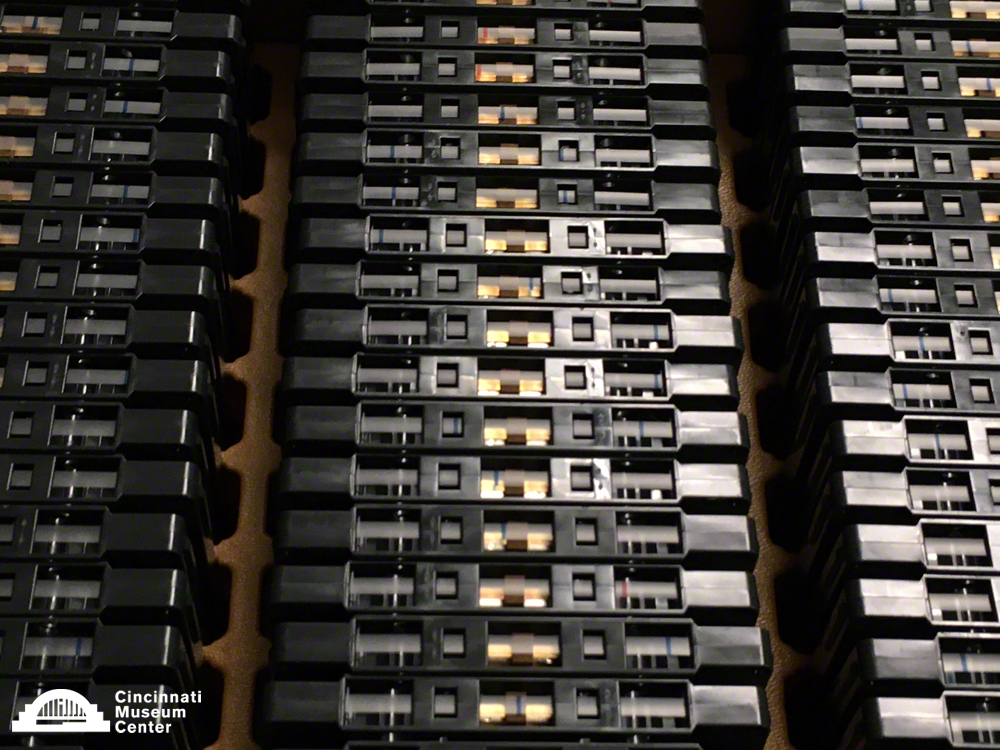
Individual audio cassettes without cases. This non-archival case was purpose built to hold cassettes in 2 sections. The tapes will need to be placed into cassette cases and archival boxes.
For more information
* "Analog Audio Tape." Analog Audio Tape - Wiki. Accessed February 28, 2017. http://www.conservation-wiki.com/wiki/Analog_Audio_Tape.
*** Bal, Marcos Sueiro, and David L. Morton, Jr. "How Irish Tape Saved Civilization." WNYC. Accessed February 28, 2017. http://www.wnyc.org/story/how-irish-tape-saved-civilization/.
*** Morton, David L., Jr. "John Herbert Orr and the Building of the Magnetic Recording Industry, 1945…1960." AES Historical Committee. July 09, 2014. Accessed February 28, 2017. http://aes-media.org/historical/pdf/morton_john-herbert-orr.pdf.
**** Swan, Derry. Great Performances: Free To Dance - Biographies - Thelma Hill. http://www.thirteen.org/freetodance/biographies/hill.html (accessed 2017-02-24).
Museum Admission
Includes Cincinnati History Museum, Museum of Natural History & Science and The Children’s Museum.
| Adult (13+): | |
| Senior (60+): | |
| Child (3-12): | |
| Member Adult: | FREE |
| Member Child: | FREE |
Members receive discounts!
Become a Member today to save on programs, exhibits and films throughout CMC.
Museum Hours
Open Thursday – Monday
10 a.m. to 5 p.m.
Closed Tuesday and Wednesday
Closed Thanksgiving Day and Christmas Day
Member’s-only early entry: Saturdays at 9 a.m.
Customer Service Hours:
Monday – Sunday, 9 a.m. to 5 p.m.
